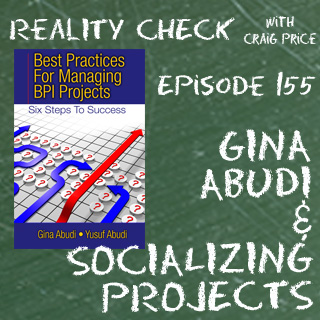The Importance of Work/Life Balance and What To Do About It
A major concern for many Human Resource (HR) professionals today is helping to ensure a work/life balance for employees. Certainly trying to balance work and life can be difficult regardless of your position, but frequently you see the most issues occurring for management levels and higher.
Especially in today’s environment where many organizations have reduced headcount through layoffs or attrition; those left behind feel the need to work more hours in order to pick up the slack and to, frankly, save their jobs. There is a fear that if they do not push themselves they could be out of a job next. Here is HR’s problem – these individuals are going to burn out or get frustrated and eventually move on to another job. Additionally, they aren’t “on their game” – let’s face it, these individuals can’t be working at peak performance if they are stretching themselves too thin. Something has to give. This lack of a balance leads to stress and the potential for poor health – all of which are costly in the long run for the organization. Employees who are burned out at work do not meet their goals/objectives, have difficulty dealing with problems that arise or conflicts with others and are not engaged. These employees cannot help the company grow. Additionally, they begin to have difficulties in the personal (home) life which puts further strain on them.
A recent article in the March 2010 edition of Human Resource Executive (page 14) discussed a recent survey that found that nearly 50% of adults in the United States bring work home with them and many of those reporting that it is interfering with their family life. Employees feel as if they need to prove their value to their employer in order to keep their job when those around them are being laid off. The higher up on the ladder an employee (job authority, job skill level, decision making latitude, personal earning capability, etc.) are all predictors of increased infringement on family life, according to the survey.
There are a few things that HR can do to help create improved work/life balance. First, make sure the executive team is aware of the situation. Don’t assume they know that there is a concern with work/life balance.
Consider sending a questionnaire to employees – make it anonymous if that helps in your organization. Ask questions such as:
- How many hours a week do you work – whether at work or from your home (after you have left work)?
- Do you spend time thinking about work or working when it is a weekend or you are on vacation?
- How many times a week do you get to take an hour lunch break, without working while eating lunch?
- How often do you take the vacation allotted to you?
- How often do you get frustrated at work because you can’t finish a project, or feel like you are pulled in too many directions?
- Do you feel depressed about your job or can barely motivate yourself to get to work in the morning?
- What causes you the most frustration at work?
- Amount of emails/phone calls
- Lack of direction from management
- Lack of teamwork
- Other?
- Are you excited when you are assigned new projects, or do you see it as “just one more thing I can’t get to?”
These should get you started. Obviously adjust the questions to fit your environment and the objectives.
It is very important to set the stage prior to sending a survey to staff. Let them know why you are doing the survey (e.g., concerned about employees), what you want to see as the outcome (e.g., better work/life balance), and how they can help (e.g., by completing the survey).
Once complete, share the results with all employees along with a plan on what will be done to make things better and over what time line. Need their help? Let them know!
Some options to help improve work/life balance may include:
- Job sharing opportunities
- Work-from-home options (telecommuting)
- 4-day a week options
- Help employees manage time better/get organized
- Offer Friday “lunches” at work so people are away from their desk for an hour
- Adjust working hours – let people start earlier or later than the usual
- Host get-togethers for staff – during work hours – even if just for an hour to socialize
Some of these may work in your organization, some may not. You may need to socialize some ideas with others in the organization to get their buy-in and support. Don’t just assume the organization won’t go along with an idea – socialize it!
What other ideas do you have? What have you done to better balance work/life in your organization or personally? Please share in the Comments field below. Thanks!



Hi Mike,
Are you looking for the definition/difference between “Do the Right Thing” and “Do the Thing Right”? If so, given your particular situation, I would probably look at it this way:
There isn’t much of a difference. “Do the Right Thing” and “Do the Thing Right” basically means the same given the situation you have described. The right thing is to separate the two – political and public – to ensure success for both sides, less conflicts, etc. It will also help you to “do the thing right” as individuals will be more focused and able to accomplish more if their time is not divided between two such very distinct groups.
I hope this helps you!
Best regards,
Gina
Dear Gina:
Thanks for your clarification with my last questions.
Now, I have one concern in serparate the term of “Do the Right Thing” and “Do the Thing Right”.
Please, explain me
Very best wishes,
Mike
Hi Mike,
I had the impression you were not able to separate the functions. However, certainly, if you are able to do so, you should ask individuals to choose public or political. You will need to provide reasons behind them doing so, for example:
1. Ability to be more focused
2. Distinct goals between political and public that is better served if an individual works with one over another (and not both)
However, if you are unable to force a decision (or push individuals to make a decision), for example, this is beyond HR’s function; you will need to gather support for what you are trying to do. This support will likely have to come from the senior leadership/executive level.
Best regards,
Gina
Dear Gina:
for my first question, normally, a staff should have only one function, they should decide which one should they choice? if they choice public function, they must resign from political function. Two functions at the same time, make public staff obey the party than public population.
In here, this cases has happened again and again, public service are false day by day, and also corruption.
so, how can I separate this issue?
best wishes,
Mike
Hi Mike,
Let me answer your second question first. It seems to me, much like many organizations – both public and private – that you are lacking the number of staff necessary to do the job you want done. To make sure I’m understanding your issues accurately – to compound that issue, given the organization, salaries are lower than would be desired to attract and retain talent. Additionally, there is confusion as to what specifically are individuals’ roles and responsibilities within the educational sector – e.g., are they focused on the government or the public side. The number of students dropping out may be due to the lack of staff to support students’ needs (lack of customer service effectively).
You may have limited control over these issues. However, I might suggest doing the following (assuming this is even possible):
• Do an analysis of the education sector as it exists today, including reduction in student enrollment and any other customer service-type issues.
• Develop a plan on how to improve the situation – e.g., through learning & development programs for staff, improved clarity around roles and responsibilities, better alignment of staff talent to organizational needs, etc.
• Present your findings (analysis) and your recommended development plan to the higher ups in the organization – make sure you include some solid numbers (facts) to back up your analysis and make your point.
• Include a plan on how you will measure progress to show it is all working – the impact on the business (organization) and ROI.
As for the first question, I’m not sure if I have enough information to specifically address the question. It seems to me that it may be OK if a staff has 2 functions – both public and political – assuming that the roles and responsibilities for each are clearly defined.
Hope this helps you!
Best regards,
Gina
Dear Gina:
This is Mike, from Cambodia, I would like to ask you a few question related to human resource management. 1) what should we do, if a staff of government has two functions (public and politic) at the same time? 2) How to improve the public human resource management in educational sector? (Now, lack of salary, limitation of capacity staff, lack staff, not clarify function [political and public], and numbers of student who drop out are increased…)
I expect you will provide me the result in soon.
very best wishes,
Mike
Hi Diane,
Thanks for your comment. Once implemented, there is still work around work/life programs for organizations to ensure its continued success – regular review and revisions to the program to meet changing needs – both of employees and the organization as a whole. Telecommuting is definitely a challenge in and of itself – it does take a different skill to manage telecommuters and you are quite right that in many cases (certainly not all) telecommuters work more hours than those who are in the office every day. I know that the days I am not in the office and I work from home I end up starting much earlier (when I get up which is around 6:00 AM the latest), breaking briefly for a shower and breakfast, then working through lunch much of the time (eating at my desk) and then break for dinner later than usual. The biggest challenge with “work at home” programs is ensuring that it is implemented fairly across the organization. Let’s face it, some employees just can’t work at home because of the job they are doing. It is a challenge for many organizations to determine who can work at home and who can’t – it is not always clear cut and frankly, to be successful, takes much planning.
Thanks for reading!
Best,
Gina
Great article, Gina. In organizations that implement work/life programs, there are several key challenges. When telecommuting is permited, managers may come to view the absent employee differently than those who they see more often. It is a “face time” management issue and managers need to be able to view the work being objectively and not be overly influenced by face time. In fact, many people who work at home are not only more productive, but work longer hours! Then too, there are those who cannot do this well at all. Changing the game plan via work at home programs requires a higher quality of managment. Another pitall is that often such programs are viewed by single employees as favoring those with family committments. Just a few thoughts.